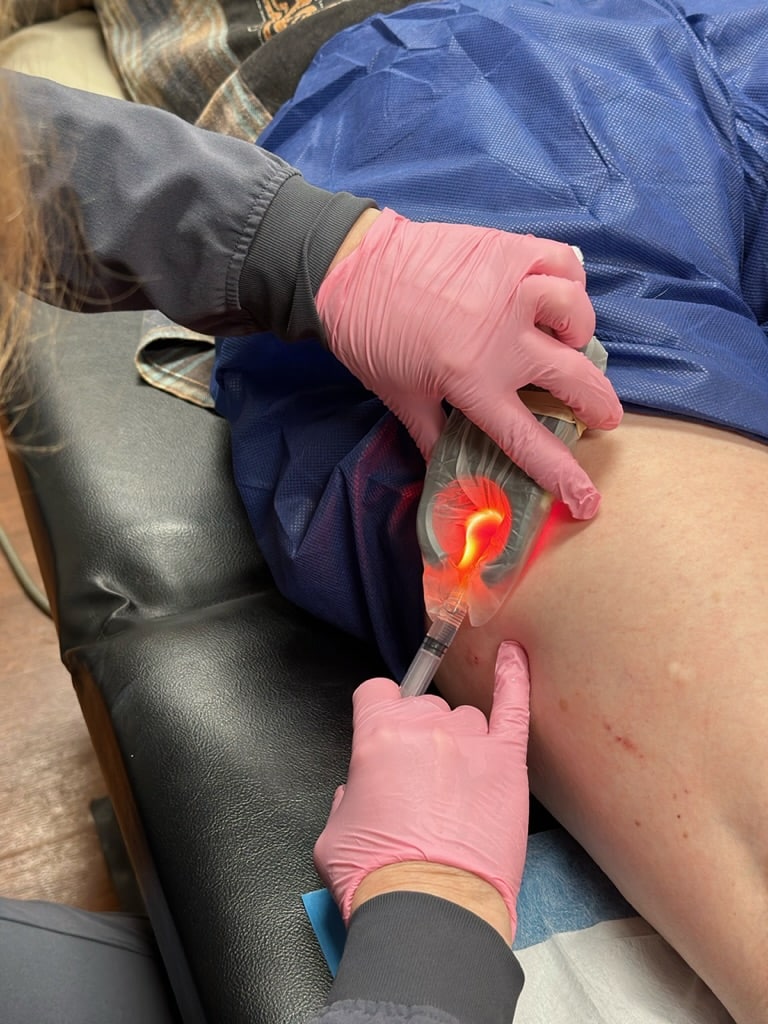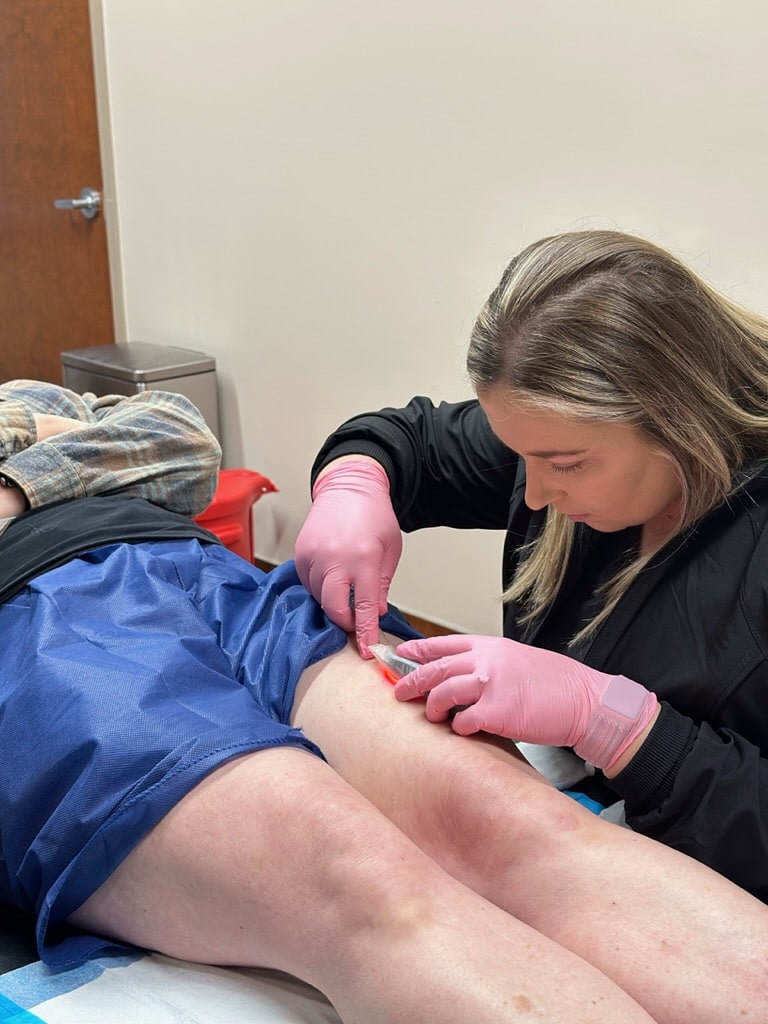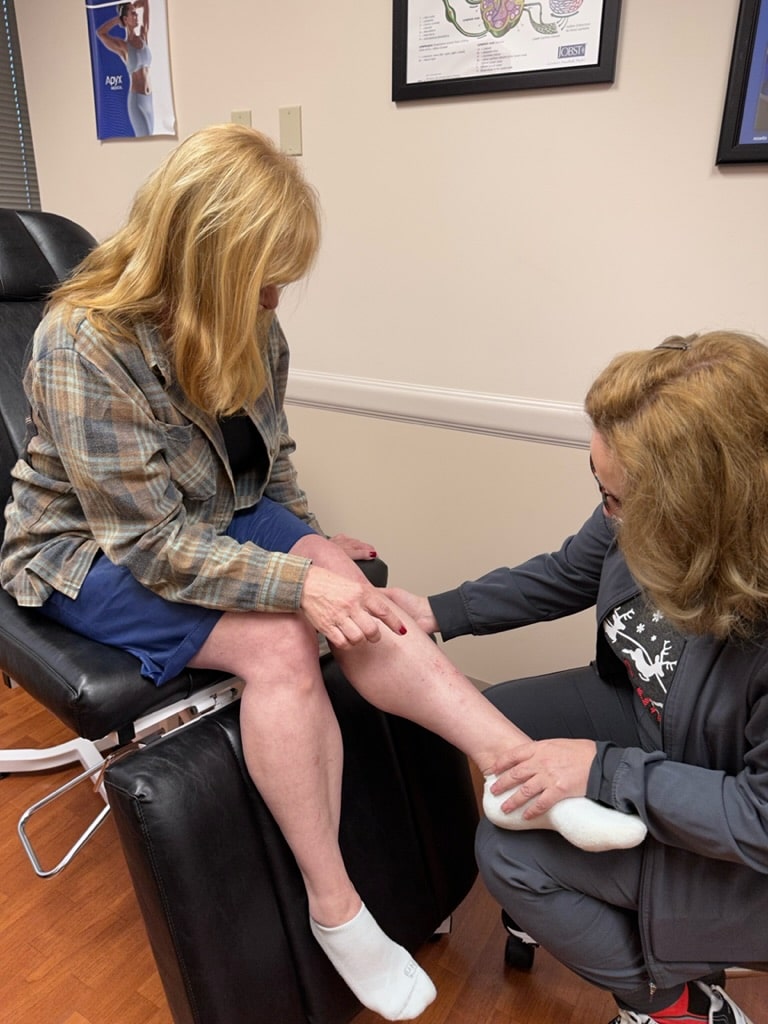Sclerotherapy is a popular medical procedure for treating spider veins and other vein issues. It involves injecting a solution directly into the veins, which causes them to collapse and eventually disappear. The procedure is minimally invasive and usually lasts a few minutes. It’s also an affordable and effective treatment, but there are some side effects to consider. In this article, we’ll discuss the sclerotherapy benefits, the potential side effects, and how to minimize them. We’ll also cover pre-treatment tips, aftercare instructions, and when to seek medical attention. Lastly, we’ll address some common misconceptions about sclerotherapy and review other treatments for spider veins.
What is Sclerotherapy?
Sclerotherapy is a widely used medical procedure for treating varicose and spider veins. During the procedure, a sclerosing solution is injected directly into the affected veins. The solution damages the walls of the veins, causing them to collapse and eventually disappear. It’s a minimally invasive procedure that is generally safe and effective. It’s also much more affordable than other treatments. The process usually takes 20 to 30 minutes, depending on the size of the treated veins. It can be performed in-office, and the recovery time is typically quick. After the procedure, you may experience some redness, swelling, or bruising, but these side effects should go away within a few days.
Sclerotherapy Benefits
The benefits of sclerotherapy are numerous. First and foremost, it’s an effective and affordable treatment for spider veins and varicose veins. It’s also minimally invasive, so there’s no need for surgery or laser therapy. Additionally, it’s relatively quick and convenient, and the recovery time is generally short. Sclerotherapy can also improve your self-confidence. Spider veins can be unsightly and embarrassing, and the procedure can help you feel more comfortable in your skin. Additionally, it can improve your overall circulation and reduce the risk of blood clots.

Side Effects of Sclerotherapy
Although sclerotherapy is generally safe, there are some potential side effects. The most common side effects are redness, swelling, and bruising at the injection site. These side effects usually go away within a few days, but they can last up to a week. Patients may also experience some itching or burning. This is due to the sclerosing solution irritating the veins. These sensations generally subside after a few days, but they can last up to a week.
How to Minimize Side Effects
The best way to minimize side effects is to follow your doctor’s instructions before and after the procedure. Before the procedure, make sure to avoid taking any aspirin, ibuprofen, or other anti-inflammatory medications. These medications can thin your blood, increasing the risk of bruising. After the procedure, it’s essential to follow your doctor’s instructions for aftercare. This may include avoiding strenuous activities for a few days, wearing compression stockings, and avoiding hot baths or saunas. It’s also important to keep the injection site clean and dry.
Pre-Treatment Tips
Before undergoing sclerotherapy, it’s important to discuss your medical history with your doctor. If you have any underlying medical conditions, such as diabetes or heart disease, your doctor may suggest other treatments or modify the procedure. Additionally, your doctor may recommend avoiding any medications or supplements that could interfere with the procedure. It’s also important to follow your doctor’s instructions for pre-treatment. This may include avoiding hot baths or saunas, taking any medications as prescribed, and avoiding any strenuous activities. This can help ensure that the procedure goes smoothly and that you experience minimal side effects.
You May Need a Venous Doppler Ultrasound
Suppose you have significant symptoms associated with your veins. In that case, your vein specialist must perform a Venous Doppler Ultrasound to evaluate for underlying medical vein conditions, which should be treated before treating cosmetic vein issues. This prevents covering up a medical condition that can progress and is also it the most cost-effective. This is a reason why comprehensive vein centers which can treat medical vein disease and cosmetic vein problems are usually the best option for vein patients.
Aftercare for Sclerotherapy
After the procedure, it’s essential to follow your doctor’s instructions for aftercare. This may include avoiding strenuous activities, avoiding hot baths or saunas, and wearing compression stockings. Additionally, it’s important to keep the injection site clean and dry.
Your doctor may also suggest that you take a mild pain reliever, such as ibuprofen, to reduce any discomfort. If you experience any redness, swelling, or itching, apply cold compresses or take an over-the-counter anti-inflammatory medication.

When to Seek Medical Attention
Although the side effects of sclerotherapy are usually minor, there are some situations in which you should seek medical attention. If you experience severe pain, swelling, or redness, you should seek medical attention immediately. Additionally, if you have any trouble breathing or if your symptoms don’t improve after a few days, you should contact your doctor.
Common Misconceptions about Sclerotherapy
There are some common misconceptions about sclerotherapy. One of the most common misconceptions is that it’s painful. While the injections can be uncomfortable, the procedure is generally not painful. Additionally, the discomfort is usually short-lived and can be easily managed with over-the-counter medications. Another misconception is that the procedure is not effective. However, sclerotherapy is an effective treatment for spider veins and varicose veins, and it usually produces long-lasting results.
Contact Dr. Wright To Treat Your Spider Veins
Sclerotherapy is a popular medical procedure for treating spider veins and varicose veins. It’s minimally invasive, relatively quick, and often produces long-lasting results. The side effects are usually minor, but it’s important to follow your doctor’s instructions for pre-treatment and aftercare. Additionally, it’s important to be aware of other treatments for spider veins so that you can make an informed decision. If you’re considering sclerotherapy, you must speak with your doctor. They can help you decide if the procedure is right for you and provide you with all the necessary information. With the right approach and proper care, you can enjoy the benefits of sclerotherapy while minimizing its side effects, and Dr. Wright and his team are here to help!

